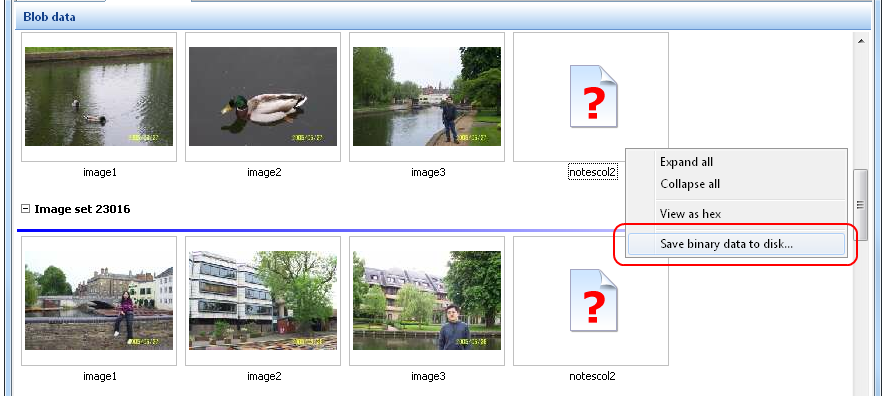|
|
|
Unidentified images or binary data
When
you retrieve data from your database and SQL Image Viewer fails to
identify the type of data, but you know it is suppose to be a
specific type of data, you should perform the following:
|
|
·
|
select
the binary data and save it to disk. This saves the data as it is
stored in the database directly to a file.
|
|
|
·
|
rename
the file using the extension of the expected data type e.g. if it's
suppose to be a jpeg image file, rename the file using the .jpg
extension
|
|
|
·
|
try to
open the file using a common viewer e.g. for a jpeg image file,
Windows should be able to open the file using its built-in image
viewer
|
What we have encountered is that sometimes, applications that
support the storage of images sometimes compress the data prior to
saving it. The application may advertise the fact that it supports
the storage of x and y image types, but in reality, the data stored
in the database is in a different format.
|


